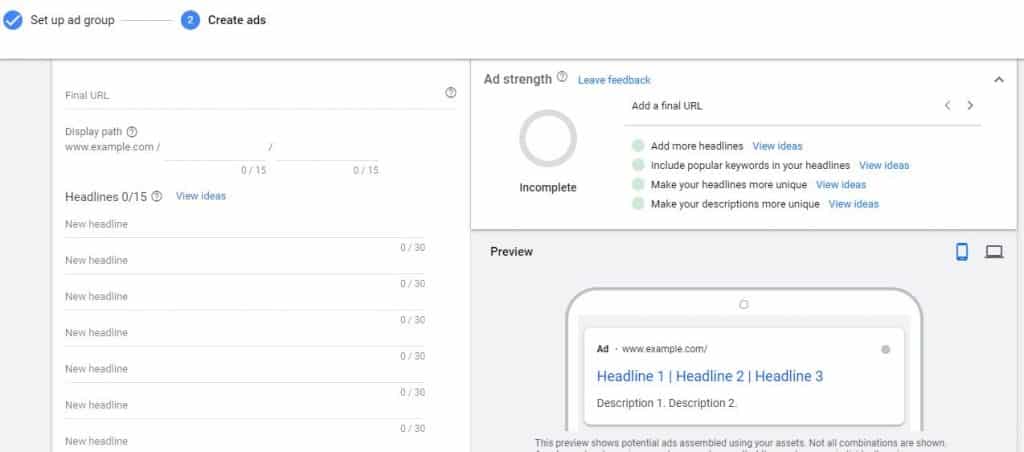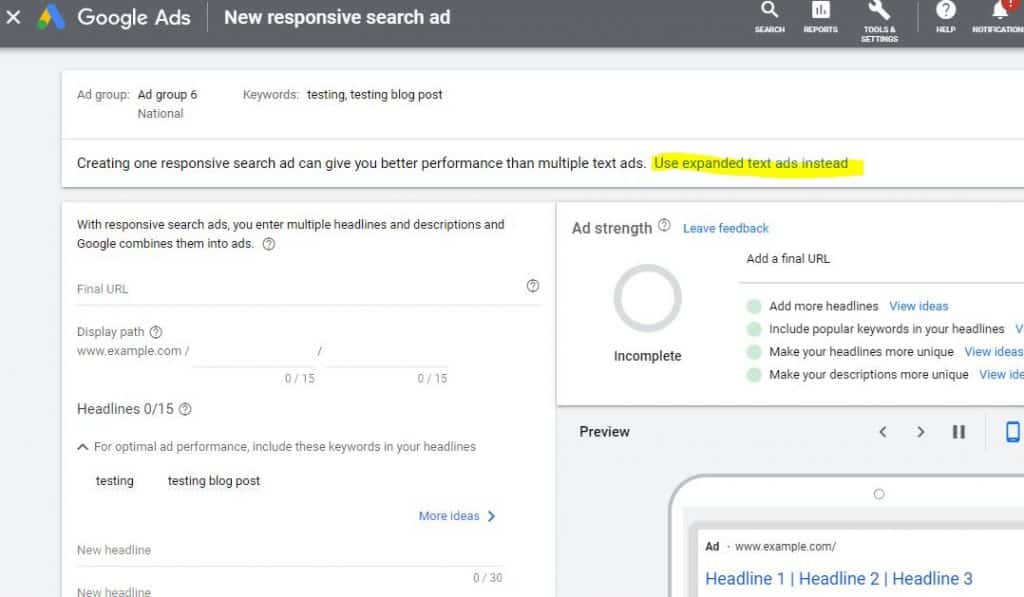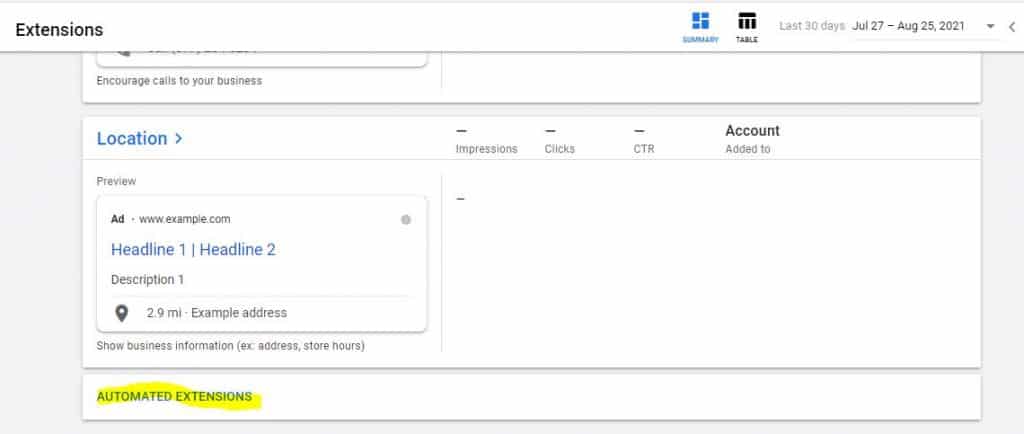Last Updated on January 12, 2022 by admin
Paid search advertisers are getting bombarded by automation in Google Ads. In many cases, it’s Google Ads’ quest to continue to squeeze as much revenue as possible out of accounts. They spin automation as being the best thing; it improves optimization and then increases impression share and so on.
Some of the AI can be good. And I do see a future where:
- We continue to have AI forced on us and have to cave to Google’s demands.
- AI in Google Ads will do a good job of delivering ads to the right target audiences.
For example, as much as I cringe, I do see fairly good results with responsive search ads. Generally, with the proper selection of headlines and supporting copy, the robots do a good job of generating click-through rates that can compete with automated ads.
BUT. What if we don’t want to use responsive ads. Google has done an excellent job of making it very difficult to use good old-fashioned expanded text ads and keep automated extensions from showing, but there is a workaround. First, we tackle responsive search ads.
If you are creating ads for the first time in an ad group, there is no longer an option to create an expanded text ad. You only get options for Responsive search ad, Call ad, or Ad variation.

Given you really don’t have an option for the ad type you want here, click on Responsive search ad. When creating an ad group for the first time, there still is not an option for an expanded text ad.

So, go down and hit cancel for the ad creation. Then hit Save and continue to save the incomplete ad group. 
Now, (isn’t this efficient…) go back to add a Responsive Search Ad in your Ads tab. Once you do this a second time, you now see a very small, hidden reference to using expanded text ads as highlighted below.

Now, you can finally get back to using expanded text ads to use or test against RSAs.
Next, extensions. We all know how critical extensions are in helping our optimization scores and click-through rates. Search engine result pages have become a real estate game. Grab as much qualified real estate as possible underneath the query bar. Sitelink, callout, call, structured snippet, price, and image extensions help us do that. However, if you have ever seen one of your ads and thought, ‘Wait, I didn’t put that link into the ad, or wait, I didn’t write that callout,’ here is why.
Congrats, you are automatically enrolled into Google Ads automated extensions program! Meaning, Google Ads AI will arbitrarily take information from you landing pages and ads and decide it makes sense to put them into extensions, without you knowing it. You need to opt-out of it. Doing so takes several clicks.
First, go to the Extensions tab. Next, go all the way to the bottom click on Automated Extensions. Nice how it is hidden at the bottom, isn’t it?

This is where you will see the potentially concerning stats of all of the automated extension results to this point depending on your date range. From here, all the way over to the right side, you see the three dots “more”. This is where you will see the pop-out to click Advanced Options.

From this, select the option that is not recommended by Google, Turn off specific automated extensions. Note how there is not automated setting for this. Oh no. You must go through each of the extension types.

Additionally, turning each one off asks for the type and reason – increasing the number of clicks and time to perform this function.

So as you can see, Google Ads wants the robots to run our campaigns. And they do a great job from a usability standpoint of making it really hard to turn these extensions off. Now, again, you may want RSAs and you may want dynamic extensions. They can indeed perform. For me and how we run things, I want complete control over what my client’s target audiences see in their search results.
In Part 2, we will evaluate Auto-Applied Suggestions in keywords and ad copy.

Leave a Reply